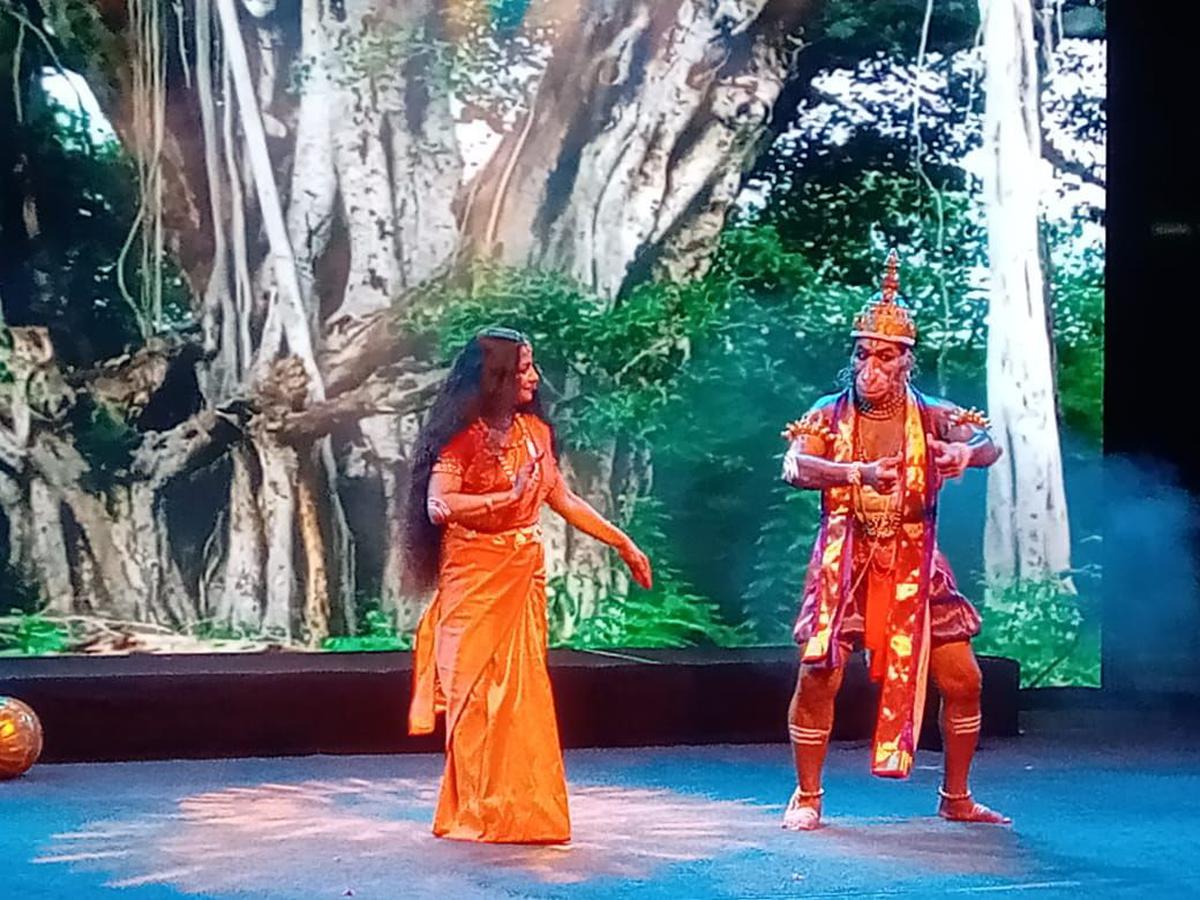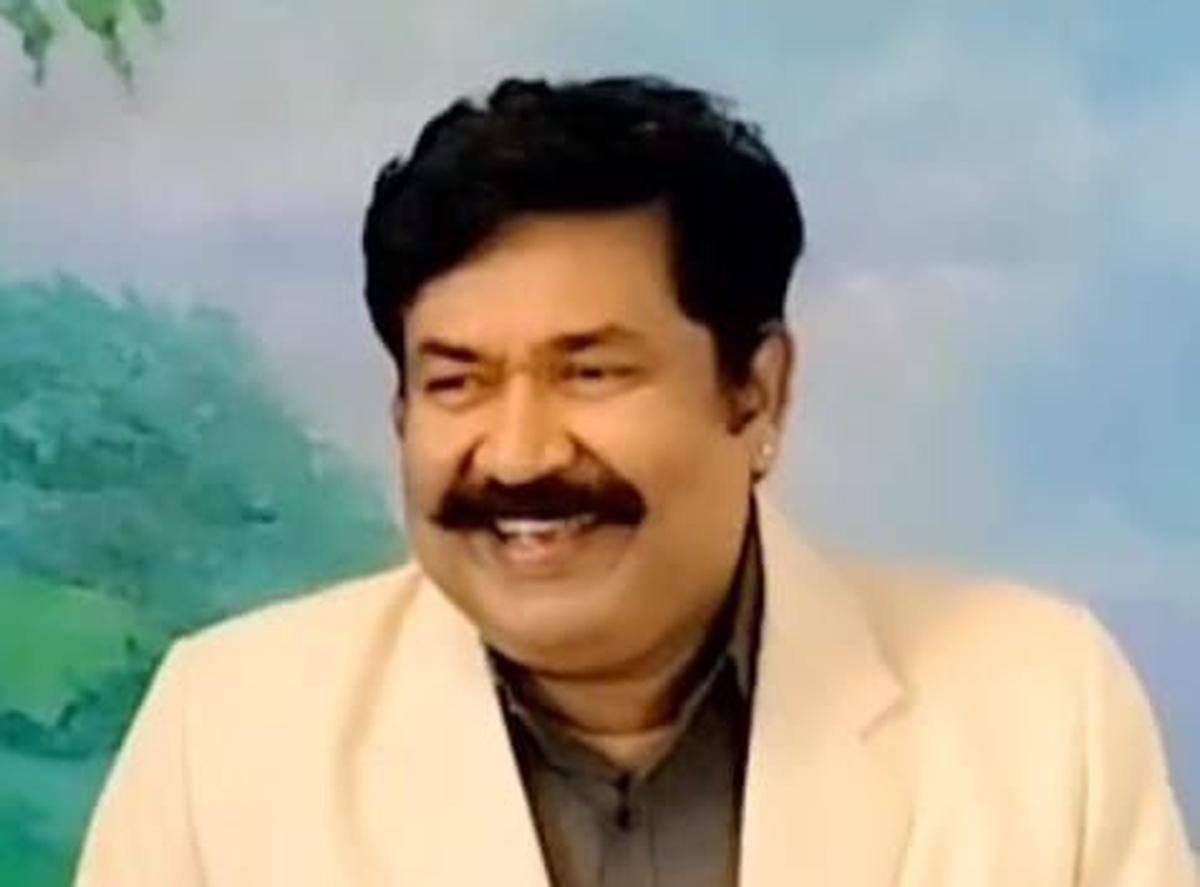‘Anguliya Choodamani’, staged as part of Guru Gopinath’s birth anniversary celebrations, showcases how he simplified Kathakali for global appeal
‘Anguliya Choodamani’, staged as part of Guru Gopinath’s birth anniversary celebrations, showcases how he simplified Kathakali for global appeal
Avant-garde dancer Guru Gopinath (1908–1987) was an ambassador of Kathakali who believed that the dance-theatre could be popularized only if it was performed in an accessible manner to the common man. So he created an improvised version of Kathakali, originally known as Kathakali dance and later as Kerala Natanam. This was achieved by reducing the natyadharmi (stylized) elements in Kathakali and adding more folkdharmi (naturalistic) acting. In this endeavor, he was joined by his wife Thankamani, who was the first and only student of Mohiniyattam when the dance form was introduced in Kerala Kalamandalam in 1932.
Kalamandalam Madhavan, Kelu Nair and Ananda Sivaram, who were contemporary of Gopinatha, popularized this style across the world.
Guru Gopinath. , Photo Credit: The Hindu Archives
A prolific choreographer, Gopinath’s works included innumerable solo, duet, group and folk dances apart from 40 dance plays, which were eloquent proofs of his novel concept.
Although he was criticized for diluting Kathakali, his works inspired many artists around the world to learn Kathakali. Art lovers in Thiruvananthapuram got the rare opportunity to watch the dance drama ‘Anguliya Choodamani’ performed as part of the week-long birth anniversary celebrations at Guru Gopinatha Natana Gramam.
Hanuman meets Sita

From ‘Anguliya Chudamani’. , photo credit: special arrangement
Created in the 1950s, the leitmotif of the one-hour drama is the meeting of Sita, who was kidnapped by Ravana, and Hanuman in Ashokavanika in Lanka. Hanuman presents Rama’s fingers to Sita, and she in return sends her chudamani to her beloved husband.
The 30-minute play was edited and recreated by Sanjeev Nair. An engineer by profession, Sanjeev is a disciple of Gopinath and has performed in many stages with his guru.

Sanjeev Nair. , photo credit: special arrangement
The play begins with his thoughts about Sita’s pathetic plight. She is afraid of her surroundings. She wonders if Ram has completely forgotten her and decides to take her own life for which she tears a part of her clothes and throws it on the tree to hang.
Suddenly she hears the chant of ‘Ram, Ram’ and Hanuman appears at the scene wearing a mask on his face. The stranger’s presence adds to her fear and she asks him to reveal his identity. At this point, he hands over Rama’s fingers to her. Overjoyed on seeing the ring, she inquires about Rama and Hanuman gives a detailed description of his guru.
Sita, in turn, sends her chudamani through Hanuman. His joy is expressed through dance and in the end, he disappears. Gopinath had choreographed this play in a simple way. Although the entire show was based on Kathakali, consisting of music, kalasam and mudras, the folklore aspects, especially in the role of Sita, were very effective in communication. As far as her ahariya (costume) is concerned, she was dressed in a saffron colored sari. Her antics were also not overly stylized.
Acharya for each character
Incidentally, Gopinath always prescribed aharya for each character in real life, unlike Kathakali. A king was in the dress of a real king, and a hunter was in the dress of a real hunter. This he prescribed for Kerala Natanam, but sadly, once the dance form was introduced in youth festivals, it took a similar form to Mohiniyattam. Scholars have criticized it.
Hanuman’s postures, Kalasam and Ilakiyattam were strictly in Kathakali format. The music composed by Late V. Dakshinamurthy was on the lines of Shuddha Kathakali Sangeetham in Ragamalika and Taalmalika. The verses of Hanuman are taken from Kamba Ramayanam (Tamil). The LED screen on the backstage depicting Ashokavanika was a laudable innovation by Sanjeev Nair; This added to the dramatic effect.
Sanjeev who plays Hanuman proved that he is a trained Kathakali artist. He was proud that the mask he used was made by Guru Chandrasekaran, a disciple of Gopinath. For Sitara Balakrishnan, a veteran Mohiniyattam dancer, the character of Sita showcased her admirable historical prowess.
The author and culture critic is a trained musician.